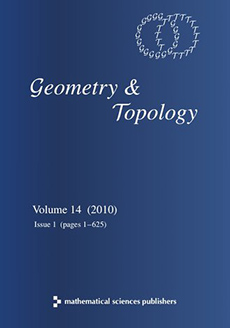Abstract
We show that any smooth, closed, oriented, connected –manifold can be trisected into three copies of , intersecting pairwise in –dimensional handlebodies, with triple intersection a closed –dimensional surface. Such a trisection is unique up to a natural stabilization operation. This is analogous to the existence, and uniqueness up to stabilization, of Heegaard splittings of –manifolds. A trisection of a –manifold arises from a Morse –function and the obvious trisection of , in much the same way that a Heegaard splitting of a –manifold arises from a Morse function and the obvious bisection of .
Citation
David Gay. Robion Kirby. "Trisecting $4$–manifolds." Geom. Topol. 20 (6) 3097 - 3132, 2016. https://doi.org/10.2140/gt.2016.20.3097
Information





